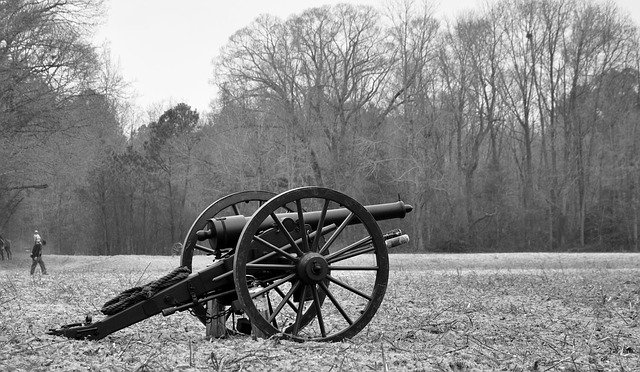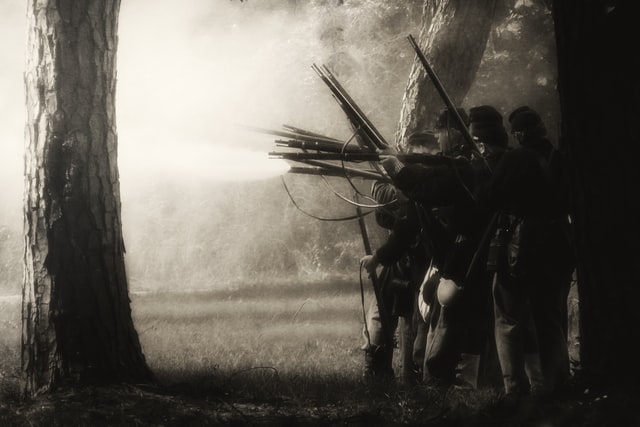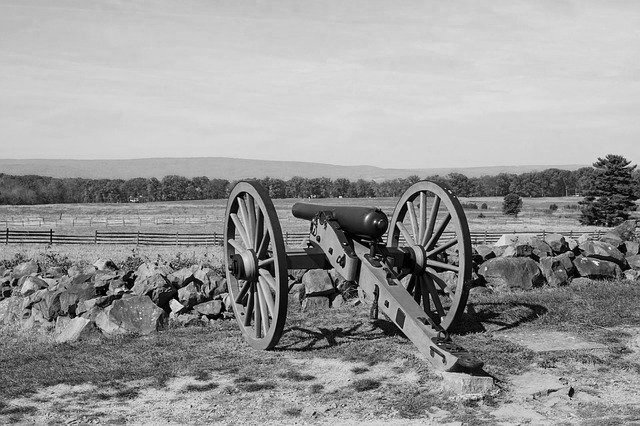
Before we look at what are the Best Metal Detectors for Archaeology, we need to first take a quick look back over our recent past to see why the two sides have not always seen eye to eye, if you look back over time you will see that archaeologists and metal detectorists have not always been the closest of friends.
Thankfully that is gradually changing as some forward-thinking archaeologists have realized that a person swinging a metal detector can be very useful on all types of sites and from nearly all periods throughout history too.
How metal detectors can help Archaeologists
One of the main reasons for this is that magnetometers are commonly used devices that scientists employ to detect very slight magnetic anomalies when looking for kilns, burned structural features, or hearths. One of the biggest enemies of such a machine is metal, which will mess up the readings gained from a survey. So to reduce such an occurrence, metal detectors are commonly used to rid the area of bottle tops, tinfoil, and other trash that has built up over time, which disrupts the reading of the magnetometer.
Now whereas some archaeologists criticize their use due to the understanding that a significant amount of artifacts are made of non-metallic materials, they should also consider that, although this is correct, much of the surrounding area also can contain such things as straight pins, hairpins, nails, bolts, and buttons. In fact, this list is endless, as many historical sites do contain a substantial amount of metallic items.
“Not only will all the ‘historical’ sites never be discovered, but the passage of time will also continue to destroy them along with their artifacts and treasure” (Garrett 1998).
One of the most obvious advantages is that a metal detector can be used to find the location of these metallic targets, as well as help to define their pattern of distribution over a particular site. Such as the location of nails can often determine where a building once stood. Things like this can be crucial in not only where to dig but also can save a lot of time for the team involved.

Where metal detectorists come into their own is where most of the materials to be found are metal, such as military or battle sites. Metal artifacts such as spent casings and bullets, as well as badges and buckles, are often scattered over such areas. These metal objects are important in very quickly establishing whether the site is of military importance as opposed to a domestic or industrial site. For this reason alone, if an archaeologist searches a military site without a metal detector to hand, he will be at a serious disadvantage from the start, if all he has at his disposal is shovel testing.
Why did Archaeologists start to use metal detectors?
For the reasons stated above the 1980s saw detectors used more and more by the forward-thinking archaeologist. And during the early ’80s metal detectors were the primary machines being used on the battlefield, rather than the standard shovel test, as they realized that shovel testing alone was impractical.
Another area where they were being used was that of underwater archaeology and the excavation of many sunken ships. As most of these vessels were constructed of wood and difficult to date accurately, identification of the metallic object within the ship helped them get a better understanding of its history.
Today many of the metal detectors available to buy have become very sophisticated and often have the ability to distinguish between different metals, as they search. The depth of the target can also be indicated as can its particular identity. And underwater detectors are readily obtainable to assist with underwater archaeology. All of these attributes go a long way toward metal detecting being accepted by mainstream archaeologists. Once they are confident in the machine’s ability and its accuracy they soon realize that the site survey can move at a much quicker pace than without it.
Both on the same side
And from our point of view, the relic hunter or detectorist believes they are rescuing the artifact from the ground so that it can then be displayed and therefore making that little piece of history available to all. This is the same standpoint that the professional archaeologist operates from and in some instances makes them reluctant to accept the whole idea. So as we can see, even today, a lot of work needs to be done to educate both sides, which will then, in turn, allow the detectorists to work alongside the archaeologist and assist them as they survey historical sites.

In fact, if this were to happen more, it is a win-win situation, because, to their credit, detectorists can often work long hours with no pay, to survey these large areas. And the site would be covered a lot quicker.
Now if this is an area that you would like to explore a little more, or you have even been approached by a team of archaeologists and asked for help with a site, you will need the correct equipment. Here we will look at a number of the Best Metal Detectors for Archaeology, available today.
Which metal detector is the best for the site?
Depending on which type of historical site you will be searching, each machine will need different levels of accuracy and adjustment. For this reason, I have divided the recommended detectors into different categories.
Areas of historical interest such as Civilian Conservation Corp Camps ( CCC)

These camps were a conservation and relief program set up by President F D Roosevelt’s New Deal program and ran from 1933 to 1942. These sites can be great areas of historical interest and can also be rich pickings for detectorists.
If you find yourself detecting on such a site as part of an archaeological dig, you should find that a good entry-level detector will do the job just fine. And as you do your research you may notice that there are plenty that fit those criteria out there to choose from. Our recommendations are:-
Garrett Ace 300 Metal Detector For Archaeology
The Garrett brand is up there with the best and most respected manufacturers of detectors, in the world today. And the Garrett Ace 300 is no exception, in fact, it is one of the best metal detectors for archaeology available. Simple and lightweight in its design it is also strong and sturdy. Fitted with a padded forearm support it is ideal for using for long periods without getting fatigued. It also has an impressive array of features; especially its digital targeting ID and the well-designed display gives you all the targeting information needed.
Pros & Cons
Verdict
Fisher F22 Metal Detector For Archaeology
Although the Fisher F22 metal detector is targeted at the novice, it has all the features to keep a seasoned treasure hunter happy too. With the inbuilt ability to detect the size and depth of the target, as well as the type of metal found, this low-priced detector has many of the features found in higher-priced machines. And with the added bonus of allowing you to search in shallow water, you can’t really go wrong with this machine. Weighing in at just 2.3 pounds this lightweight durable machine is great for detecting artifacts, jewelry, and coins buried up to 9” below the surface.
Pros & Cons
Verdict
Areas of historical interest such as Civil War Battlefields

The American Civil War was a significant moment in the history of the United States of America. Between 1861 and 1865 over ten thousand battles were fought across the land. And with the enormity of its significance as are the artifacts that were left behind. For this reason, you will need something a little more advanced than an entry-level detector for such sites. You will need a detector with much better features, such as adjustable ground canceling capabilities. This is crucial to deal with mineralization, which will become a significant factor as you search. Good recovery speeds are also important to allow the machine to distinguish between targets that are located near to each other. Our recommendations are:-
Fisher F75 Metal Detector For Archaeology
Fisher F75 is a fantastic and highly efficient and effective metal detector. This is a professional-level device from the Fisher stable and is easy to set up and is really easy to use. It is also great value for money as you get a lot of machine for the price. This detector is perfect for coin detection, relics, and jewelry hunting. It is quite impressive how many high-end features they have managed to fit into this machine, with many adjustments available on its large LCD screen, so you can take total control when detecting.
Pros & Cons
Verdict
Minelab X Terra 705 Metal Detector For Archaeology
The X terra 705 from Minelab is one of their most popular detectors and the reasons are pretty obvious. This machine was built for relic hunting, coins detection, and many other things as well as prospecting for gold. Its state-of-the-art VFLEX technology gives the user impressive performance as well as blocking out outside interference which may disrupt any signals you get. You also have the ability to change the frequency of the detector simply by changing the search coil. This allows the user to easily modify the detector and adjust to the different environments and conditions.
Pros & Cons
Verdict
CCC’s , Battlefields, and much, much more.

In areas or sites where the density of the relics you are searching for is very scarce, you will need a machine with very high precision and extremely precise targeting facilities built in. These machines are very advanced and also very expensive. But do bear in mind, if you were to purchase one of the detectors listed below, it would have the capabilities to search almost any historical site you will come across. Our recommendations for these high-level machines are:-
Deephunter Makro 3D Pro Package Metal Detector For Archaeology
Ok, here’s where things go up a notch. This is a serious detector meant only for serious detectorists. It is the first detector that has been designed with the capacity to locate deep treasure, cavities, and voids, all in one (very expensive) unit. Never before have detectorists been able to buy a machine that has the power and capability of finding both individual coins and large deeply buried treasure in one unit.
Pros & Cons
Verdict
Nokta Makro Anfibio 14 Metal Detector For Archaeology
This isn’t a machine for the beginner. And it is not one of those detectors that you can just switch on and go. The Nokta Makro Anfibio 14 has so many features that the learning curve is huge. It will take even the seasoned detectorist a while before he is comfortable with all the settings, but when they know how to maximize its potential, they will have a serious piece of equipment at their disposal.




















